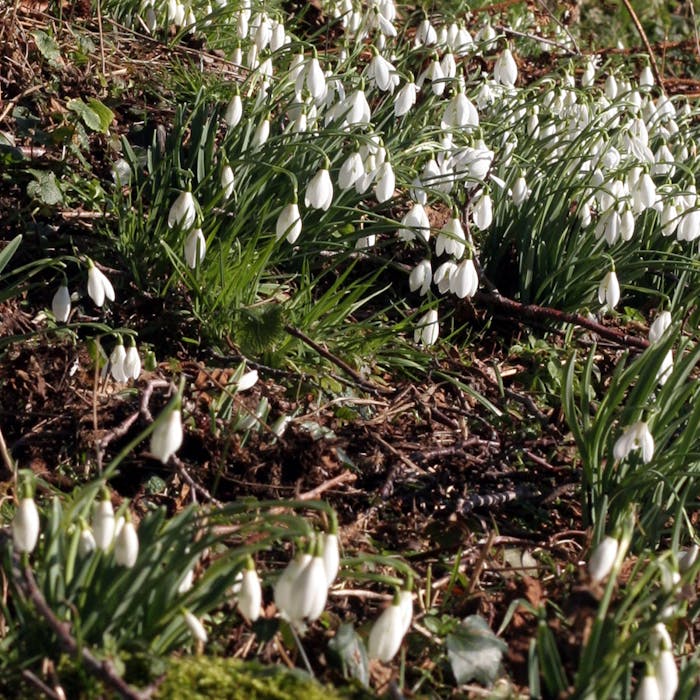
The snowdrop - much-loved winter flower
Almost nothing looks more stoical than the dainty wild snowdrop flowering above snow or bare earth in the depths of winter. Why on earth does it pick such an unpromising time of year to emerge?
Snowdrops are not native to the UK, although exactly when they were introduced is unclear. It’s thought they may have been grown as an ornamental garden plant as early as the 16th century, but were not recorded in the wild until the late 18th century. Since that time they have become widespread in the wild here. The snowdrop is native to mainland Europe.
They favour damp soil and are often found in broadleaved woodland and along riverbanks, but can also be seen in parks, gardens, churchyards, meadows and scrub. They flower in January and February.
Snowdrops are able to survive the cold winter months and flower so early, because they grow from bulbs. They are presumably trying to get ahead of their competitors on the forest floor as a great many other plants also use bulbs to allow them to emerge, grow and flower before the tree leaves blot out too much of the light. Snowdrops make it out first. The price they pay is that fewer insects are around. Snowdrops spread in Britain mostly by bulb division.
Snowdrops were once called Candlemass Bells. As a symbol of purity and light they were brought into churches on 2nd February – Candlemass Day – a Christian feast that commemorates the ritual purification of Mary forty days after the birth of Jesus. It also marks a more ancient festival celebrating the middle of winter, halfway between the shortest day and the spring equinox. Even today, churchyards are often full of snowdrops, planted to supply flowers for Candlemass.
Further reading
Links to external websites are not maintained by Bite Sized Britain. They are provided to give users access to additional information. Bite Sized Britain is not responsible for the content of these external websites.
